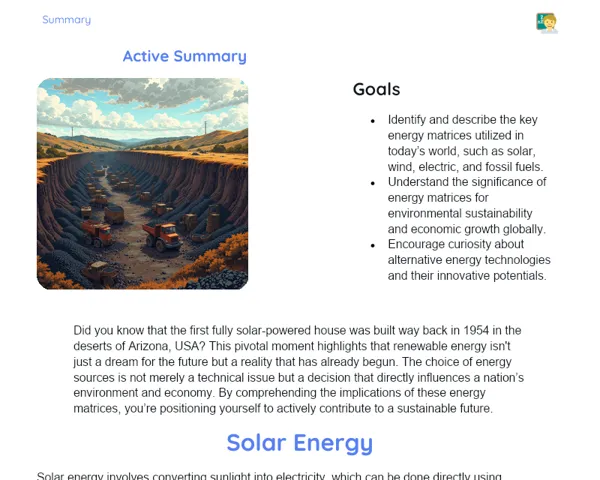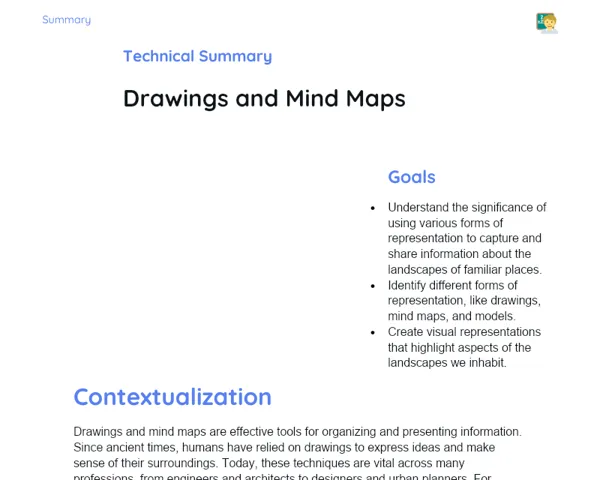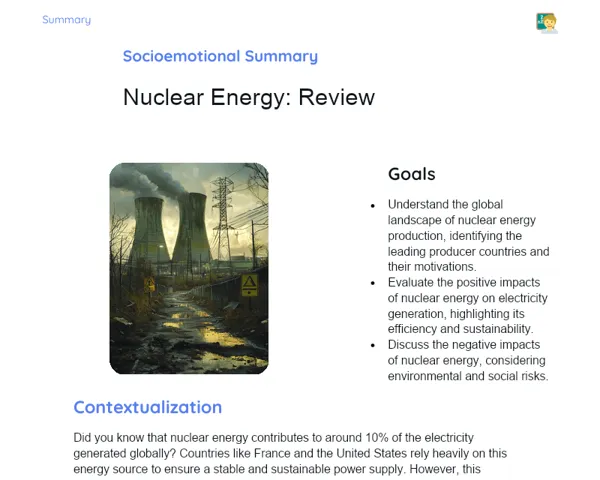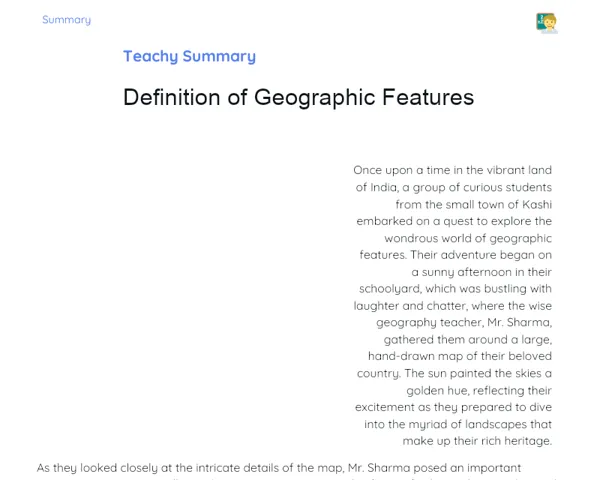Socioemotional Summary Conclusion
Goals
1. Recognize and describe the distinctive physical features of Oceania, including its geography and ecosystems.
2. Understand the historical and cultural ties between European settlers and the indigenous peoples of Oceania.
3. Cultivate the ability to identify and manage the emotions involved in learning about Oceania.
Contextualization
Did you know that Oceania is home to unique species that aren't found anywhere else in the world? 🌏🐨 Picture yourself wandering through verdant rainforests, arid landscapes, and breathtaking beaches while uncovering the rich heritage and vibrant traditions of both indigenous peoples and immigrants! Let's delve into how these historical and natural interactions have shaped a continent brimming with diversity and challenges. Get set for an exhilarating journey filled with discoveries! 🚀🌺
Exercising Your Knowledge
Physical Aspects of Oceania
Oceania is an expansive and diverse continent comprising thousands of islands scattered across the Pacific Ocean. It can be divided into four primary regions: Australia, Melanesia, Micronesia, and Polynesia. Each of these regions boasts unique physical attributes, from the arid deserts of Australia to the lush tropical rainforests of Melanesia.
-
🔍 Regional Division: The four main regions of Oceania—Australia, Melanesia, Micronesia, and Polynesia—each possess their own geographical characteristics.
-
⛅ Climate Diversity: Oceania's climate ranges from dry deserts in Australia to tropical and subtropical weather on the Pacific islands.
-
🌿 Unique Biodiversity: Oceania is home to unparalleled biodiversity, including iconic species such as kangaroos, koalas, and kiwi birds.
History and Culture of Native Peoples
The indigenous peoples of Oceania, including Australian Aboriginals and Maoris from New Zealand, have rich and varied cultures. Their customs, languages, and spiritual practices reflect a profound connection to their land and nature. Understanding these cultures is vital for appreciating the identity and history of the continent.
-
🌏 Connection to the Land: Indigenous peoples have a spiritual bond with nature, deeply intertwined with their cultural and subsistence practices.
-
🗣️ Linguistic Diversity: Oceania is home to hundreds of indigenous languages, each carrying its own historical and cultural significance.
-
🎨 Traditions and Arts: The music, dance, and art of the native peoples encapsulate their stories, mythologies, and values, playing a crucial role in cultural preservation.
Impact of European Immigrants
The arrival of European settlers in Oceania brought significant changes to the native societies. These encounters were often marred by conflict, disease, and cultural transitions that molded the region's history. Understanding these interactions is essential for reflecting on issues of identity, resistance, and cultural adaptation.
-
⚔️ Conflicts and Resistance: Encounters between Europeans and indigenous peoples frequently resulted in violence and resistance, leaving lasting marks on native communities.
-
🦠 Impact of Diseases: The introduction of European illnesses had catastrophic effects on native populations, who lacked immunity to these foreign diseases.
-
🌍 Cultural Transformations: Colonization brought substantial changes to the cultural, social, and economic frameworks of native societies, affecting their identities and ways of living.
Key Terms
-
Oceania
-
Geography
-
Natural Aspects
-
Ecosystem
-
European Immigrants
-
Native Peoples
-
Self-awareness
-
Self-control
-
Decision Making
-
Social Skills
-
Social Awareness
-
RULER
-
Guided Meditation
-
Socio-emotional Reflection
-
Emotional Regulation
For Reflection
-
🤔 How did you feel while learning about the relationship between European settlers and the indigenous peoples of Oceania? What emotions came up when considering the conflicts and changes that took place?
-
🧠 While discovering Oceania's incredible biodiversity, what feelings did it evoke in you? How do these feelings affect your perspective on the importance of preserving our environment?
-
💬 Reflecting on the cultural and linguistic diversity of Oceania, how might understanding and respecting these cultures enrich our own lives and foster greater empathy and social awareness?
Important Conclusions
-
Oceania is a continent of diverse regions such as Australia, Melanesia, Micronesia, and Polynesia, each with its own unique traits.
-
The biodiversity of Oceania is unmatched, hosting iconic species like kangaroos, koalas, and kiwi birds.
-
The indigenous peoples of Oceania, including Australian Aboriginals and Maoris from New Zealand, possess rich cultural traditions and a variety of languages.
-
The influx of European immigrants brought sweeping transformations to native societies, including significant conflicts and cultural shifts.
Impacts on Society
Studying Oceania allows us to understand significant contemporary issues like environmental conservation and social justice. For instance, protecting Oceania's unique biodiversity is vital for global sustainability. The challenges faced by indigenous peoples in their quest for recognition and rights remain pressing, underscoring the necessity for empathy and actionable steps to promote equity and respect for cultures.
Moreover, learning about the historical interactions between settlers and natives in Oceania reveals the dynamics of power, resistance, and adaptation that have shaped the continent. These lessons are invaluable for reflecting on our own societies and how we can aid in creating a fairer and more inclusive world. Awareness of these social and historical matters can motivate us to become catalysts for positive change in our communities.
Dealing with Emotions
To keep your emotions in check while studying this topic, I encourage you to practice daily reflection using the RULER method. In a notebook or journal, jot down the emotions you experienced during your studies about Oceania. Try to pinpoint the reasons for these emotions and label them accurately. For example, you may have felt empathy upon learning about the difficulties faced by indigenous groups, or wonder when exploring the unique biodiversity of the continent. Express these emotions through writing or drawing, and discover ways to manage them, such as pausing for a break, taking deep breaths, or discussing your insights with someone. This exercise will enhance your emotional intelligence and strengthen your connection to the material.
Study Tips
-
Utilize maps and globes to visualize and comprehend the geography of Oceania more effectively. This will help you grasp the information in a clearer and more engaging manner!
-
Create a study journal where you can document your discoveries and feelings about the topic. This will not only assist in reinforcing your knowledge but also promote self-awareness.
-
Watch documentaries and read online articles regarding Oceania and its cultures. These additional resources can offer fresh perspectives and deepen your understanding of the continent.



